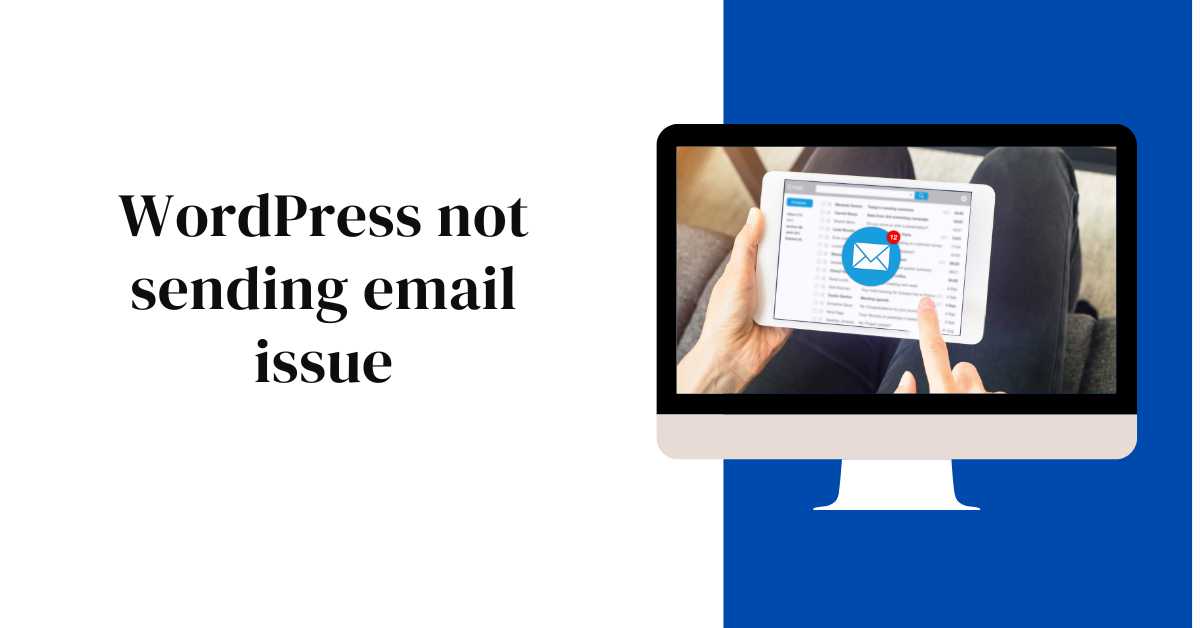WordPress is one of the most popular platforms for building websites and managing content. However, like any software, it can encounter issues from time to time. One common problem that WordPress users face is the failure of the platform to send emails. This issue can be frustrating, mainly if your website relies on email notifications for various purposes, such as user registrations, password resets, or contact form submissions.
In this guide, we’ll explore the potential causes of WordPress not sending email issues and provide step-by-step solutions to resolve them, ultimately improving your user experience and maintaining clear communication with your website visitors.
Identify the Problem:
Before diving into solutions, it’s essential to diagnose the root cause of the problem. Several factors could be causing WordPress not to send emails:
- Email Configuration: Incorrect email settings in WordPress can prevent emails from being sent successfully. This includes the SMTP server, port number, encryption method, and authentication details (verifying your identity with the email provider).
- Hosting Server Restrictions: Some hosting providers restrict outgoing emails to prevent spam, which can result in blocked or undeliverable emails.
- Email Deliverability Settings: WordPress relies on the PHP mail function by default, which may not be reliable for sending emails. Additionally, spam filters or firewall settings can interfere with email deliverability.
- Plugin or Theme Conflict: Conflicts with plugins or themes can interfere with WordPress email functionality. A recent update or installation may have caused the issue.
Before we begin troubleshooting, it’s always a good idea to back up your WordPress site in case anything goes wrong. Additionally, some of the solutions below might require some technical knowledge, so if you’re uncomfortable making changes yourself, consider seeking help from a developer.
Now that we have a better understanding of the potential causes let’s move on to the solutions:
Solution 1: Check Email Configuration Settings
- Log in to your WordPress dashboard.
- Navigate to Settings > General.
- Verify that the email address entered in the “Email Address” field is correct.
- Install and activate a reputable SMTP plugin such as WP Mail SMTP by WPForms.
- Configure the SMTP settings using an SMTP service provider like Gmail, SendGrid, or SMTP.com. These providers offer reliable email delivery and often have free plans available.
- Test the email settings by sending a test email through the plugin.
Solution 2: Contact Hosting Provider
- Reach out to your hosting provider’s support team.
- Inquire about any restrictions or limitations on outgoing emails.
- Request assistance in configuring email settings or resolving any server-side issues.
- Ask if they can whitelist your website’s domain to ensure email deliverability. Having your domain whitelisted helps email providers recognize your emails as legitimate and not spam.
Solution 3: Adjust Email Deliverability Settings
- Install and activate the WP Mail SMTP plugin if you haven’t already.
- Navigate to Settings > WP Mail SMTP.
- Choose an SMTP mailer option (e.g., Gmail, SendGrid). A mailer essentially intermediates between your website and the email service provider.
- Configure the mailer settings with the appropriate credentials (username and password) for your chosen SMTP service provider.
- Test the email settings by sending a test email through the plugin.
Solution 4: Disable Plugins and Themes
- Deactivate all plugins installed on your WordPress site.
- Test if the email issue persists. If emails are sent successfully, the problem may be caused by a plugin conflict.
- Re-activate plugins individually and test after each activation to identify the conflicting plugin. You can also try deactivating plugins in groups to narrow down the culprit faster.
- If the issue persists after deactivating plugins, switch to a default WordPress theme (e.g., Twenty-One).
- Test email functionality with the default theme to determine if the issue is related to the active theme.
Conclusion:
Experiencing issues with WordPress not sending emails can be frustrating, but the problem can usually be resolved with the proper troubleshooting steps. Following the solutions outlined in this guide, you can identify the root cause of the issue and implement the necessary fixes to restore email functionality on your WordPress site. Whether it’s adjusting email settings, contacting your hosting provider, or debugging plugin conflicts, persistence and thoroughness are crucial to solving the WordPress not sending email issue.
If you’ve tried all the solutions above and are still facing problems, additional resources are available to help. You can search for solutions in the WordPress forums or consult the developer documentation for the SMTP plugin.
